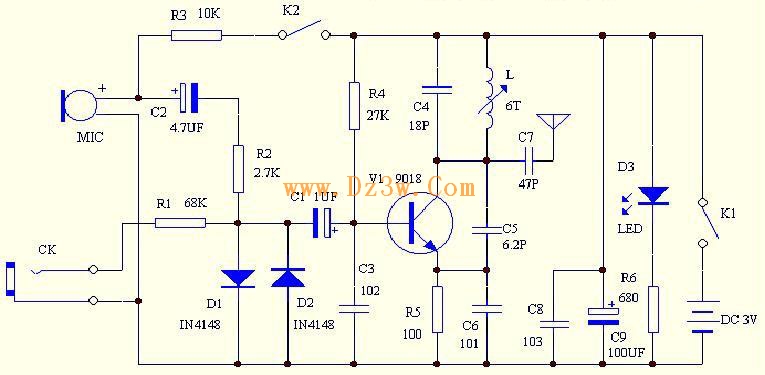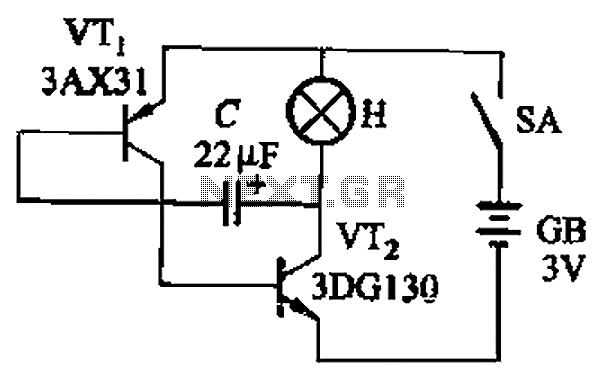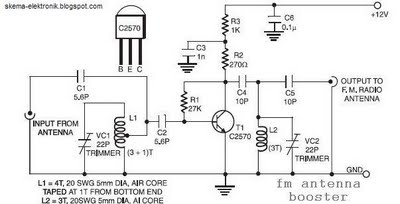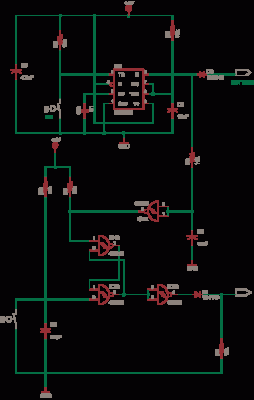
Double IC For Circuit an Infrared Toy Car Motor Controller
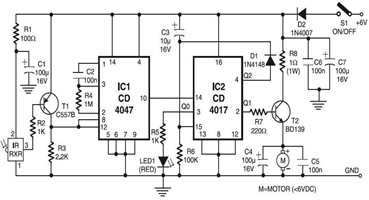
The following circuit illustrates an infrared toy car motor controller. This circuit is based on the 4047 and 4017 integrated circuits (ICs). Features: 16V.
The infrared toy car motor controller circuit utilizes two primary integrated circuits, the 4047 and the 4017, to effectively manage the motor operations of the toy car. The 4047 IC functions as an astable multivibrator, generating a square wave output that can be used to control the speed of the motors through pulse-width modulation (PWM). This allows for variable speed control, which is essential for maneuvering the toy car smoothly.
The 4017 IC serves as a decade counter, which can be employed to control multiple outputs based on the clock pulses received from the 4047. By connecting the outputs of the 4017 to transistors or relay drivers, the circuit can activate or deactivate the motors in response to the infrared signals received from the remote control. This setup allows the toy car to move forward, backward, and turn, providing a full range of motion.
Powering the circuit at 16V ensures that both the 4047 and 4017 ICs operate efficiently while providing adequate voltage to drive the motors. Additional components such as resistors, capacitors, and diodes may be included to stabilize the circuit and protect against voltage spikes. The overall design emphasizes simplicity and effectiveness, making it suitable for educational purposes and hobby projects involving robotics and remote-controlled vehicles.The following circuit shows about Circuit an Infrared Toy Car Motor Controller. This circuit based on the 4047 and4017 IC. Features: 16V .. 🔗 External reference
The infrared toy car motor controller circuit utilizes two primary integrated circuits, the 4047 and the 4017, to effectively manage the motor operations of the toy car. The 4047 IC functions as an astable multivibrator, generating a square wave output that can be used to control the speed of the motors through pulse-width modulation (PWM). This allows for variable speed control, which is essential for maneuvering the toy car smoothly.
The 4017 IC serves as a decade counter, which can be employed to control multiple outputs based on the clock pulses received from the 4047. By connecting the outputs of the 4017 to transistors or relay drivers, the circuit can activate or deactivate the motors in response to the infrared signals received from the remote control. This setup allows the toy car to move forward, backward, and turn, providing a full range of motion.
Powering the circuit at 16V ensures that both the 4047 and 4017 ICs operate efficiently while providing adequate voltage to drive the motors. Additional components such as resistors, capacitors, and diodes may be included to stabilize the circuit and protect against voltage spikes. The overall design emphasizes simplicity and effectiveness, making it suitable for educational purposes and hobby projects involving robotics and remote-controlled vehicles.The following circuit shows about Circuit an Infrared Toy Car Motor Controller. This circuit based on the 4047 and4017 IC. Features: 16V .. 🔗 External reference
